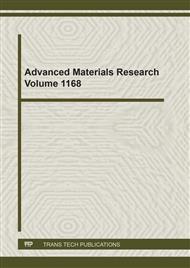p.1
p.11
p.23
p.35
p.49
p.75
p.93
p.115
p.123
Drying Shrinkage Reduction of Korean Loess Using Cations
Abstract:
The loess produced in South Korea is an eco-friendly material with high gas adsorption performance. Korean loess, however, cannot be used as a structural material because it has a very low compressive strength compared to cement. However, even if it is recommended as an interior material, its large drying shrinkage during drying disturbs wet construction. Therefore, this study aimed to develop a method to reduce the amount of water added while maintaining the consistency required for the plastering work of Korean loess. The experimental results showed that the dispersion of clay particles was improved when Na+ and K+, which are monovalent cations, were added to the loess colloid; the reverse occurred, i.e., aggregation of clay particles, when Ca2+ and Mg2+, which are divalent cations, were added. In addition, the dispersion and aggregation of clay particles affect the consistency of loess. The dispersion allows the loess paste to obtain the required consistency using less water, but the aggregation may exhibit the opposite effect. Accordingly, based on the same consistency, the specimens with less water exhibited less drying shrinkage. The drying shrinkage decreased by 9.23% for the specimen fabricated with the 0.01 M Na2SiO3 aqueous solution.
Info:
Periodical:
Pages:
1-9
Citation:
Online since:
January 2022
Authors:
Keywords:
Price:
Сopyright:
© 2022 Trans Tech Publications Ltd. All Rights Reserved
Share:
Citation:


